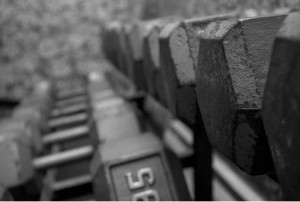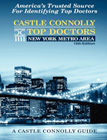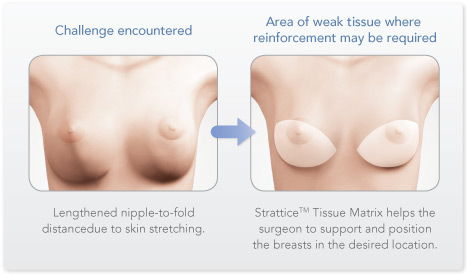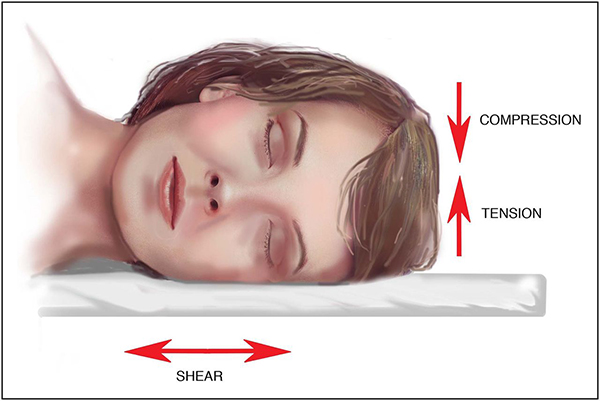Lack of exercise is a major factor that contributes to the onset of many of the infirmities associated with the aging process. It is estimated that muscle mass declines about 22% in women and men between the ages of 30 and 70. Inactivity leads to the loss of muscle tone and strength. As your muscles deteriorate, your posture changes and your tissues sag due to the lack of underlying support provided by a strong, toned musculature. Lack of exercise can also lead to cardiac and metabolic related health problems, such as diabetes. A sedentary lifestyle results in a decrease in bone density that can alter the vertebrae of the spine in a way that produces a loss of height and chronic pain. Bones and joints become more fragile leading to an increased risk of fractures and joint replacement surgery.
Modifications in our behavior can have a significant impact on how well we face the aging process. For those that want to look and feel younger, exercise is key to maintaining not only a healthy, youthful appearance but also a positive outlook on life. Taking the time to care for your body through a regular exercise schedule will reduce the consequences of aging. Below, we list four topics to consider when deciding on an exercise program to keep you fit, youthful, and healthy.
Weight Management and Exercise
Excess body fat is common in today’s world. Little of what we do requires rigorous physical activity, and most of our leisure time is spent in front of the computer or television. Results from the 2007–2008 National Health and Nutrition Examination Survey (NHANES), using measured heights and weights, indicate that an estimated 34.2% of U.S. adults aged 20 years and over are overweight, 33.8% are obese, and 5.7% are extremely obese. Excess body fat can lead to health problems such as coronary heart disease, high blood pressure, osteoporosis, diabetes, and arthritis. Obesity can have a negative impact on both health and longevity. A routine exercise program is important to enable you to lose weight or to maintain your current healthy body weight. A minimum of thirty minutes of moderately intense exercise five days a week or twenty minutes of vigorous physical activity three days a week is a good starting point. Read our blog for suggestions on exercises you can do at home.

Bone Density and Exercise
It is normal to lose and replace calcium in your bones throughout life. However, after age 35 the loss of calcium begins to exceed the replacement. Menopause increases the rate of this calcium deficit in women. You can improve your bone health and bone density by exercising. Three characteristics of exercise that have the largest impact on increased bone density are: 1.) strain magnitude of the exercise such as gymnastics or weightlifting, where the force or impact of the exercise is greatest 2.) strain rate of the exercise such as jump training, known as plyometrics, where the rate at which the impact is felt is high and 3.) strain frequency of the exercise such as running, where the impact to the bones occurs repeatedly during the exercise session. The combination of these three aspects of exercise play a role in developing greater bone density in as little as 12 to 20 minutes of weight-bearing exercise, three days a week. This type of activity appears to stimulate bone formation and retain calcium in the bones that are bearing the load. The force of muscles pulling against bones stimulates this bone-building process. So any exercise that places force on a bone will strengthen that bone and counter the tendency to develop osteoporosis as we get older.
Physiological Health and Exercise
An inactive lifestyle is one of the major risk factors in the development of cardiovascular disease, as outlined by the American Heart Association. Evidence from many scientific studies shows that exercise can decrease the chance of having a heart attack, a stroke, or needing heart surgery. The benefits of regular exercise on cardiovascular risk factors are an increase in exercise tolerance, reduction in body weight, reduction in blood pressure, reduction in bad (LDL and total) cholesterol, increase in good (HDL) cholesterol, and a reduction in adult onset diabetes. The physiological benefits of exercise are the improvements in muscular function and strength and improvement in the body’s ability to take in and use oxygen. As one’s ability to transport and use oxygen improves, regular daily activities can be performed with less fatigue. This is particularly important for patients with cardiovascular disease, whose exercise capacity is typically lower than that of healthy individuals. There is also evidence that exercise training improves the capacity of the blood vessels to dilate in response to exercise or hormones, consistent with better vascular wall function and an improved ability to provide oxygen to the muscles during exercise.
Mental Health and Exercise
One theory for some of the benefits of exercise is that it triggers the production of endorphins. These natural opiates are chemically similar to morphine. They may be produced as natural pain relievers in response to the shock that the body receives during exercise. Some studies have found that exercise boosts activity in the brain’s frontal lobes and the hippocampus. Exercise has also been found to increase levels of “brain-derived neurotrophic factor” (BDNF). This substance is thought to improve mood, and it may play a role in the beneficial effects of exercise. BDNF’s primary role seems to be to help brain cells survive longer, so this may also explain some of the beneficial effects of exercise on reducing the risk of dementia.
The bottom line is that most of us feel good after exercise, which is a strong incentive to make this age-defying activity a part of your daily routine.
Tags: anti-aging, exercise
Written by Dr. Forley on November 25, 2011




